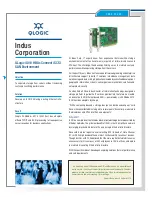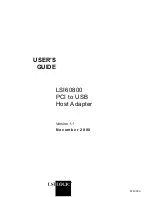
B Logical drive failure probability
This appendix discusses the probability of logical drive failure.
RAID level and probability of drive failure
The probability that a logical drive will fail depends on the RAID level setting.
•
A RAID 0 logical drive fails if only one physical disk fails.
•
A RAID 1+0 logical drive fails under the following conditions:
The maximum number of physical disks that can fail without causing failure of the logical
drive is n/2, where n is the number of physical disks in the array. This maximum is reached
—
only if no failed disk is mirrored to any other failed disk. In practice, a logical drive usually
fails before this maximum is reached. As the number of failed disks increases, it becomes
increasingly likely that a newly failed disk is mirrored to a previously failed disk.
—
The failure of only two physical disks can cause a logical drive to fail if the two disks are
mirrored to each other. The risk of this occurring decreases as the number of mirrored
pairs in the array increases.
•
A RAID 5 logical drive (with no online spare) fails if two physical disks fail.
•
A RAID 50 logical drive (with no online spare) fails if two physical disks fail in the same RAID
5 parity group.
•
A RAID ADG logical drive (with no online spare) fails when three physical disks fail.
•
A RAID 60 logical drive (with no online spare) fails when three physical disks fail in the same
RAID ADG parity group.
At any given RAID level, the probability of logical drive failure increases as the number of physical
disks in the logical drive increases.
provides quantitative information about logical drive failure. The data for this graph is
calculated from the mean time between failure (MTBF) value for a typical physical disk, assuming
that no online spares are present. If an online spare is added to a fault-tolerant RAID configuration,
the probability of logical drive failure decreases.
RAID level and probability of drive failure 109
















































